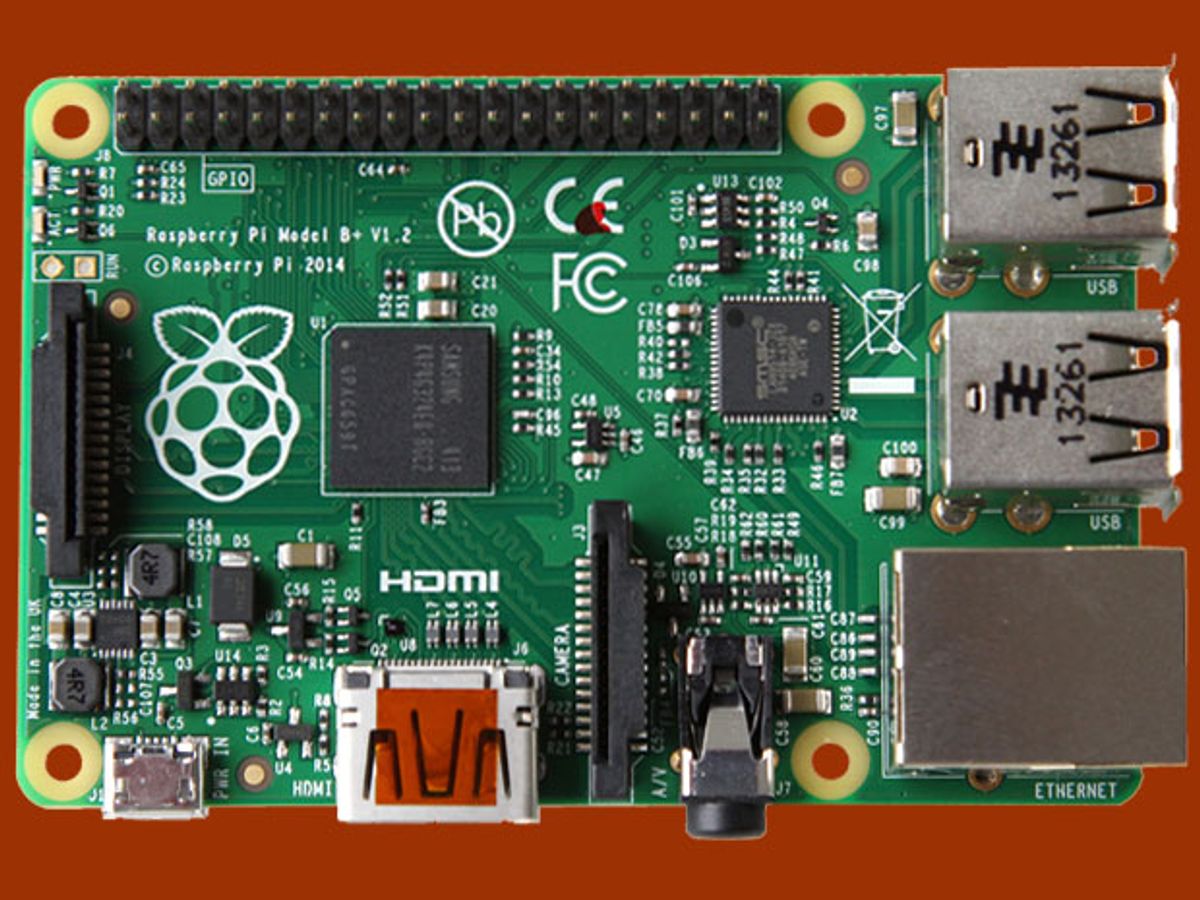This week the world’s most popular—and one of the world’s least expensive—home hobbyist computer kits just got upgraded.
The Raspberry Pi B+ retains its down-to-earth US $35 price. And it adds to its impressive arsenal of smartphone level computing power an additional two USB2 ports, a MicroSD storage slot (in place of the older SD card slot) plus lower power consumption and eight more hack-friendly general-purpose input-output pins.
Originally launched in 2012 as a low-priced, credit-card sized microcomputer aimed at the education and hobbyist markets, the Raspberry Pi has sold more than 3 million units to date, according to the nonprofit Raspberry Pi Foundation in Cambridge, U.K. (Cambridgeshire is also home to the computing world’s other great revolution in a tiny package, the ARM core processors that now — to Intel and AMD’s chagrin — comprise the CPU centerpiece of nearly every smartphone and tablet around the world today.)
Raspberry Pi are of course only as useful as the applications that developers put them to. And IEEE Spectrum’s pages and other tech publications have chronicled over the past two years the increasingly clever uses people have devised for these little palm-sized silicon slabs. With applications like radios, ultra-secure WiFi routers, homemade Google Glasses, home theater PCs, vintage videogame emulators, Pis are the secret sauce behind loads of open-source projects today.
And in education, Pis have been used in schools and extracurricular programs to evangelize for coding as that other foreign language students should be taught. Some enhanced Pi kits, such as those from the recently Kickstarted company Kano, are developed especially for school-aged kids. And software like Google’s open-source Coder environment for Raspberry Pi have been built for beginner web programmers.
With so much software and hardware built around Raspberry Pi B, Raspberry Pi Trading CEO Eben Upton has been careful to add that the B+ is also very compatible with the B’s ecosystem.
“This isn’t a Raspberry Pi 2,” Upton says in the announcement video on the Pi’s website. “This is an improved and enhanced and made-better version of the model B.”
The hobbyist world has been blogging and vlogging about the B+ and our admittedly unscientific survey has found little substantive criticism about the upgrades and considerable fan accolades.
In particular, the reported 0.5-1 Watt of power consumption the B+ saves over the B will be a welcome addition for developers working on robotics kits or other battery-powered gadgets. And the two extra USB2 ports will be welcome all around, as even non-hobbyists know you can never have enough of these.
“In general, everything has been streamlined,” says one reviewer in his video posted over the weekend. “It’s a far more polished version of the device, and I think it’s a really great revision of what they’ve done.”
Some commenters have groused that the CPU speed and memory (700 MHz, 24 gigaflop GPU, 512 MB RAM) have not been upgraded with this release. Although at a meager $35, it’s hard to find much that will really let you lodge a credible critique.
Margo Anderson is senior associate editor and telecommunications editor at IEEE Spectrum. She has a bachelor’s degree in physics and a master’s degree in astrophysics.



